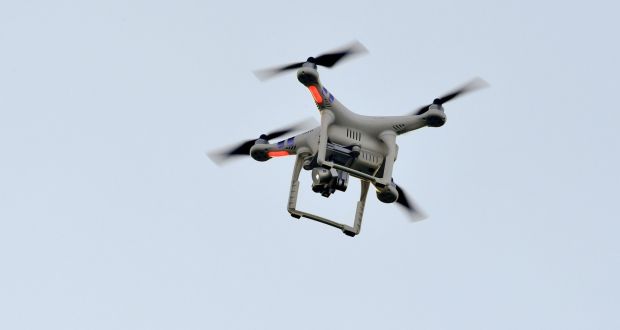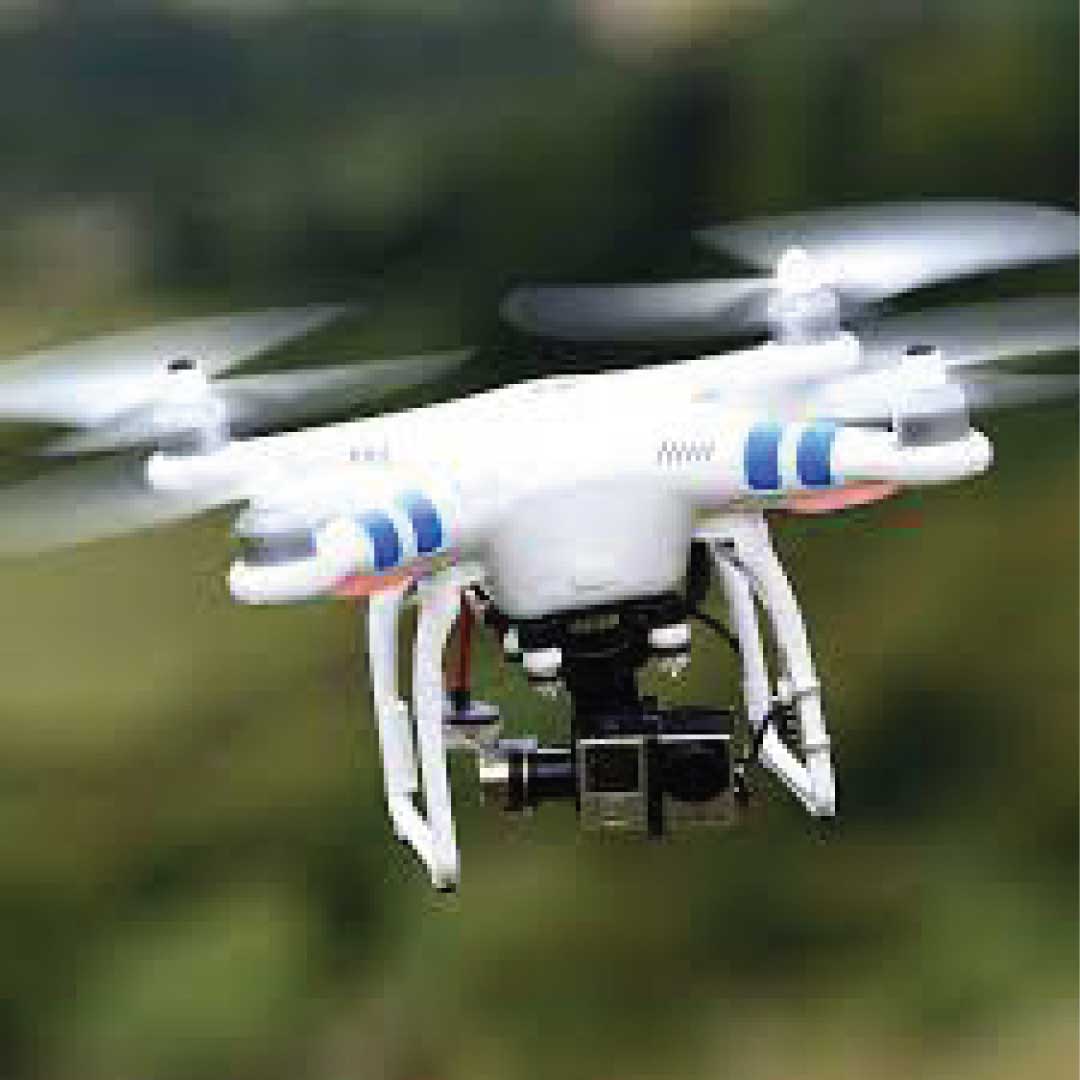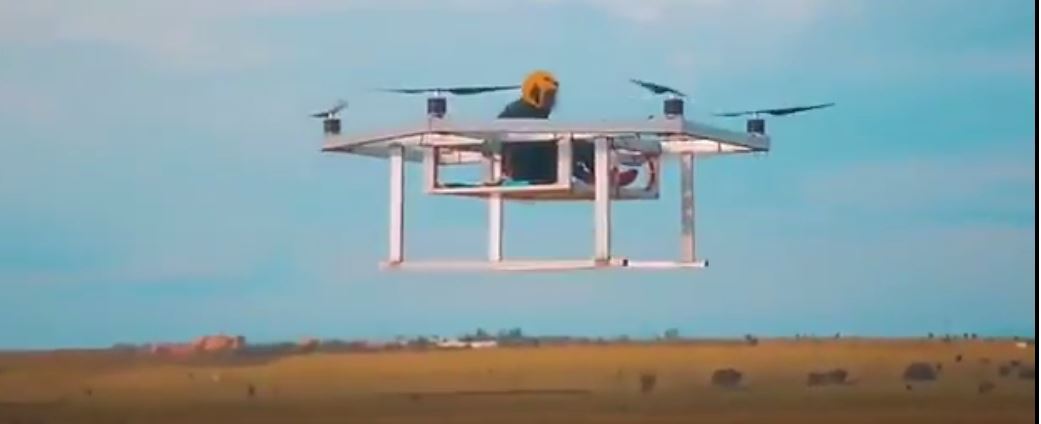There has been a significant increase in the use of drones in recent years. The likelihood of witnessing remotely controlled flying robots has increased dramatically in recent years.
Drones, also known as unmanned aerial vehicles (UAVs), were first developed by the military in the early 20th century but have since found widespread use in civilian fields, including videography, photography, and even as toys for amateurs.
However, Nigerian artificial intelligence (AI) and robotics expert Olusola Ayoola has said that drones could help Nigeria in its fight against terrorism.
Ayoola said drones could help find the terrorists’ safe house. “The fact that we don’t know where the terrorists are really bothers me; if you don’t know where the terrorists are, how can you possibly win?”
The initial step in my situation was to help the government track down anyone in a wooded area. Since oxygen levels in a forest are already quite high, adding human activities like cooking, riding, or using generators will just increase the amount of carbon dioxide released into the air.
Read also: Nissan To Showcase New technology In South Africa
Nigeria’s armed forces have experience with unmanned aerial vehicles
Though, the Nigerian military had already begun using drones before Ayoola suggested they be used to monitor carbon emissions from the country’s forests.
Military Africa reports that only Nigeria in Sub-Saharan Africa has used drones in warfare. When the Chibok girls were missing, the United Kingdom, France, and Israel were the first to send in rescuers.
Known as Tsaigumi, Nigeria’s first indigenous operational UAV was introduced in February 2018 by President Muhammadu Buhari.
Stijn Mitzer and Joost Oliemans, authors of The Armed Forces of North Korea On The Path to Songun, constructed a catalogue of Nigeria’s UAV inventory, which revealed, surprisingly, that Nigeria’s attempt at indigenously developed drones was a failure.
After considering offers from China and Turkey, Nigeria has chosen to purchase as many as eight UAVs in late 2020. A drone with the ability to detect carbon emissions would be a significant advance in the fight against terrorism in Nigeria, despite the country’s existing arsenal of surveillance and combat drones.
If drones can detect carbon, what does it mean for society as a whole?
The abduction of the schoolgirls from Chibok in 2014 was one of the worst terrorist attacks in Nigeria’s history. About two hundred and fifty female schoolgirls were abducted and held in captivity for four years.
This news broadcast features a survivor who walked for three days through the Sambisa Forest to get away. Ayoola’s technique may have helped the military locate the source of the terrorists’ carbon emissions, which would have aided in the search for survivors.
Military drones are already in use for tactical reconnaissance, but most surveillance relies on imagery from ordinary cameras to multispectral and hyperspectral imaging, which are used to track military targets in the dark.
However, it is unusual to see carbon-emission monitors mounted. According to a report on verified terrorist safehouses in Nigeria, terrorists frequently return kidnapped victims to “their camps deep in the woods.”
Drones or other airborne technologies for detecting terrorists may have trouble seeing through dense forest canopies.
However, because of the large number of trees present, forests have an especially high oxygen content. According to a report published in Frontiers, forest biomass and soils sequester about 45 per cent of the world’s organic carbon.
Ayoola predicts that human activities will lead to a noticeable increase in carbon emissions, despite the fact that carbon emissions are quite low in these areas.
Methods for flying a drone equipped with a carbon detector
The carbon emission tracker is a method we devised for finding human settlements. In Ayoola’s words, “we’re not claiming it’ll tell you that they are terrorists,” but it will tell you that there are people in a jungle that no one has been allowed to approach.
The carbon emission monitor takes atmospheric and ground-level samples.
Ayoola added that the device could trace the path of carbon emissions in the atmosphere.
Click here to read about the bronze medal won by the Nigerian team at the inaugural Global Robotics Challenge.
Based on your current altitude and GPS location, we can determine where the ground source of that emission was.
Drones have been used to monitor the atmosphere for carbon emissions before.
In May of 2022, TotalEnergies launched a plan to reduce methane emissions from all of its upstream oil and gas assets by employing drones.
The Airborne Ultralight Spectrometer for Environmental Applications was first conceptualized in 2017 and has since undergone significant development. (AUSEA).
TotalEnergies’s technology focuses mostly on quantifying atmospheric carbon dioxide levels. On the other hand, Ayoola’s technology is tuned to detect out-of-the-ordinary concentrations of carbon.
Support from the government and their willingness to help
“I have gotten amazing assistance from the government, not in cash since I am not seeking for money, but in terms of acceptability and partnership,” Ayoola said.
He claimed that collaborating with government officials on the carbon emission tracker drone has led to more partnerships with government officials on other technological solutions he has been developing.
For instance, RAIN is teaming up with the National Information Technology Development Agency (NITDA) to create IoT devices that will give farmers remote temperature and irrigation management. The states of Jigawa and Ogun have also received these devices and deployed them.
In addition, RAIN is working on a portable industrial robotic platform (IMORP). The voice-operated ground vehicle can transport up to 250 kilograms in a safe environment.
Artificial intelligence (AI) and robots are examples of deep tech, which consists of highly sophisticated but user-unfocused technologies.
The majority of African tech startups have been focused on either financial technology (fintech) or electronic commerce (eCommerce) because to these sectors’ relatively low barriers to entry.
As Ayoola sees it, there must be an explanation. You need a lot of time, energy, and expertise to do it. A laboratory or workspace is required for the development of deep technologies.
To solve this problem, the government must coordinate efforts to increase domestic output or ensure that the vast majority of enterprises in Nigeria employ locally-developed technologies.
While it is true that investing heavily in deep technology is necessary, Ayoola believes that a lot can be accomplished on a shoestring budget with the right skill set.
No, I don’t think there’s a shortage of funds for great ideas; I think there’s a deficiency of trust. The public’s faith is essential, and you must earn it.
At RAIN, Ayoola instructs students in the art of creating both hardware and software. He recruits “deep tech” enthusiasts who can take on challenging issues like food security and agribusiness, and they eventually form a formidable team.




